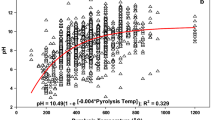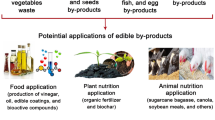Abstract
We examined two practical methods for reducing moisture content and/or ash content in biomass from southern pine harvests. Logging residues are a potential bioenergy feedstock, but contaminants can increase ash content during collection. We found that trommel screens can reduce ash levels in grindings from southern pine roundwood and clean chipped logging residues from 4.0 to 1.4 % and 11.9 to 6 %, respectively. Green whole-tree chips are a widely used form of forest biomass, but are 50 % moisture. Felling and transpirationally drying in-field before chipping reduced moisture from 53 to 43 % and 39 % in 4 and 8 weeks, respectively, without changing ash content (<0.7 %). Finally, we used data from the screening and drying studies in a simulation study to estimate delivered costs for whole-tree chipping and screened and unscreened grinders processing logging and clean chip residue. Whole-tree chipping provided the lowest cost option at ash content levels less than 1 %, and unscreened grinding of clean chip residue produced the least expensive option at 5 % ash.

Similar content being viewed by others
References
RISI (2013) Wood biomass market report, vol 6(3). Bedford, MA
Aguilar F, Garrett HE (2009) Perspectives of woody biomass for energy: survey of state foresters, state energy biomass contacts, and National Council of Forestry Association Executives. J Forest 107(6):297–306
Sarenbo S (2009) Wood ash dilemma—reduced quality due to poor combustion performance. Biomass Bioenergy 33(9):1212–1220
Pettersson M, Nordfjell T (2007) Fuel quality changes during seasonal storage of compacted logging residues and young trees. Biomass Bioenergy 31(11–12):782–792. doi:10.1016/j.biombioe.2007.01.009
Stokes BJ, McDonald TP, Kelley T (1993) Transpirational drying and costs for transporting woody biomass—a preliminary review. Proceedings of IEA/BA Task IX. Aberdeen, UK
Dukes C (2012) In-wood screening of wood grindings for biomass feedstock applications. University of Georgia, Athens
Cutshall JB (2012) Options for reducing moisture and ash content in forest biomass harvesting systems. University of Georgia, Athens
Cutshall JB, Greene D, Baker SA (In Press) Transpirational drying effects on energy and ash content from whole-tree southern pine plantation chipping operations. South J Appl For.
Dukes CC, Baker SA, Greene WD (2013) In-wood grinding and screening of forest residues for biomass feedstock applications. Biomass Bioenergy 54(0):18–26. doi:10.1016/j.biombioe.2013.02.032
TAPPI (1985) Sampling and preparing wood for analysis. vol T257 cm-85
Baker SA, Westbrook MD, Greene WD (2010) Evaluation of integrated harvesting systems in pine stands of the southern United States. Biomass Bioenergy 34(5):720–727. doi:10.1016/j.biombioe.2010.01.014
Ott LR, Longnecker MT (2001) An introduction to statistical methods and data analysis. Duxbury/Thomson Learning
Hollander M, Wolfe DA (1999) Nonparametric statistical methods. Wiley series in probability and statistics, 2nd edn. J. Wiley, New York
Miyata ES (1980) Determining fixed and operating costs of logging equipment. North Central Forest Experiment Station, Forest Service, U.S. Dept. of Agriculture, [Saint Paul, Minn.]
Fender KJ, Pierce DA (2011) An analysis of the operational costs of trucking: a 2011 update. American Transportation Research Institute, Arlington
Young TM, Domenech DW, Ostermeier DM (1988) Average wood chip trucking costs for the southeastern United States. South J Appl For 12(4):267–269
White MS, Curtis ML, Sarles RL, Green DW (1983) Effects of outside storage on the energy potential of hardwood particulate fuels: part 1. Moisture content and temperature. For Prod J 33(6):31–38
Thörnqvist T (1985) Drying and storage of forest residues for energy production. Biomass 7(2):125–134. doi:10.1016/0144-4565(85)90038-1
Phanphanich M, Mani S (2009) Drying characteristics of pine forest resources. BioResour 5(1):13
Aman AL, Baker SA, Greene WD (2011) Productivity and product quality measures for chippers and grinders on operational southern US timber harvests. Int J For Eng 22(2):7–14
Patterson DW, Hartley JI, Pelkki MH (2011) Size, moisture content, and British thermal unit value of processed in-woods residues: five case studies. For Prod J 61(4):316–320
Baker SA, Greene WD, Wilson A (2012) Fuels characteristics of woods-run whole tree southern pine chips. Biomass Bioenergy 37(0):67–72. doi:10.1016/j.biombioe.2011.12.034
Aman AL (2010) An evaluation of alternate forest biomass harvesting methods. University of Georgia, Athens
Acknowledgments
This study was funded by financial support from the Southeastern Sun Grant Center associated with the US Department of Energy and US Department of Agriculture.
Author information
Authors and Affiliations
Corresponding author
Rights and permissions
About this article
Cite this article
Greene, W.D., Cutshall, J.B., Dukes, C.C. et al. Improving Woody Biomass Feedstock Logistics by Reducing Ash and Moisture Content. Bioenerg. Res. 7, 816–823 (2014). https://doi.org/10.1007/s12155-013-9404-6
Published:
Issue Date:
DOI: https://doi.org/10.1007/s12155-013-9404-6




